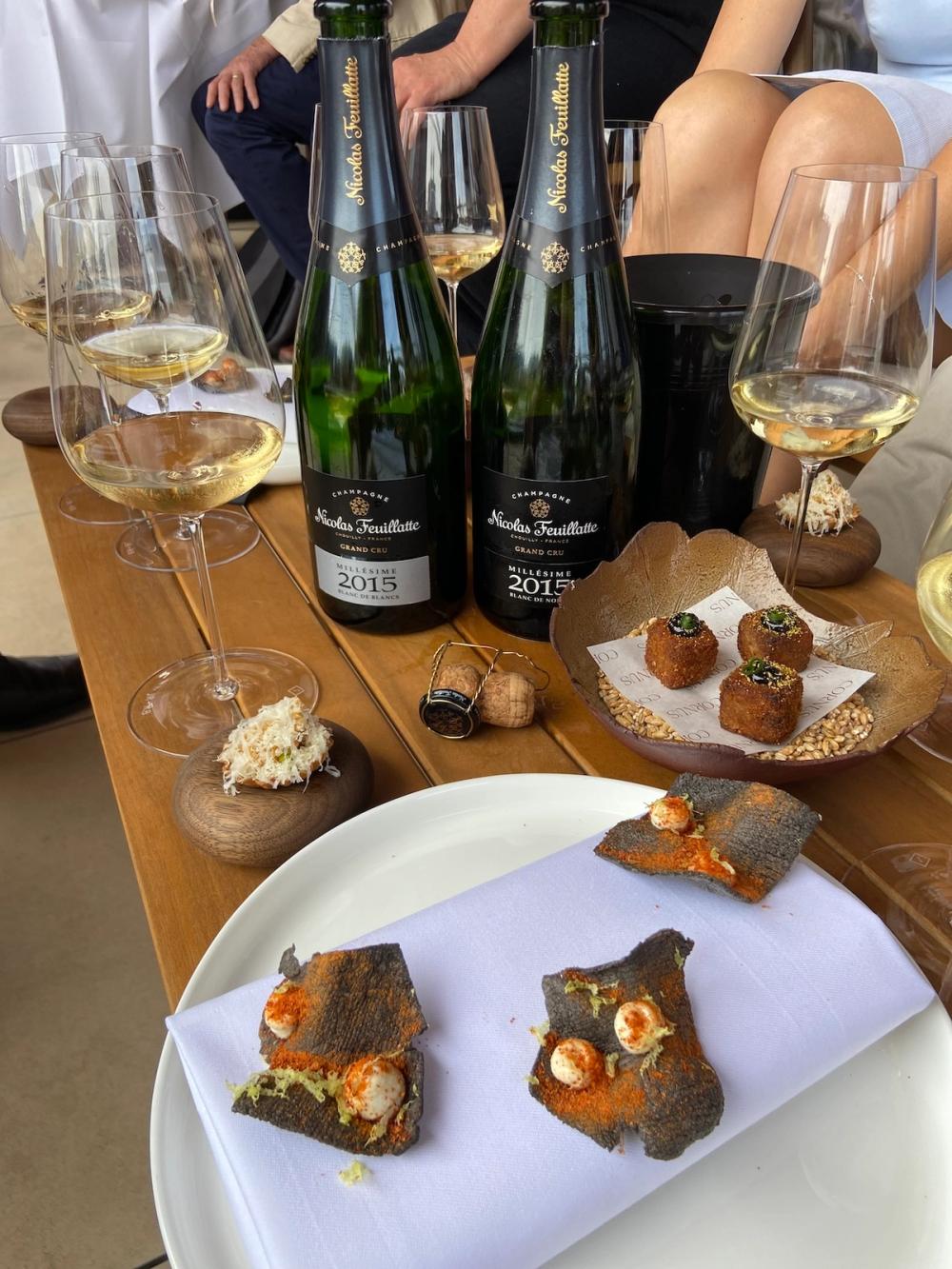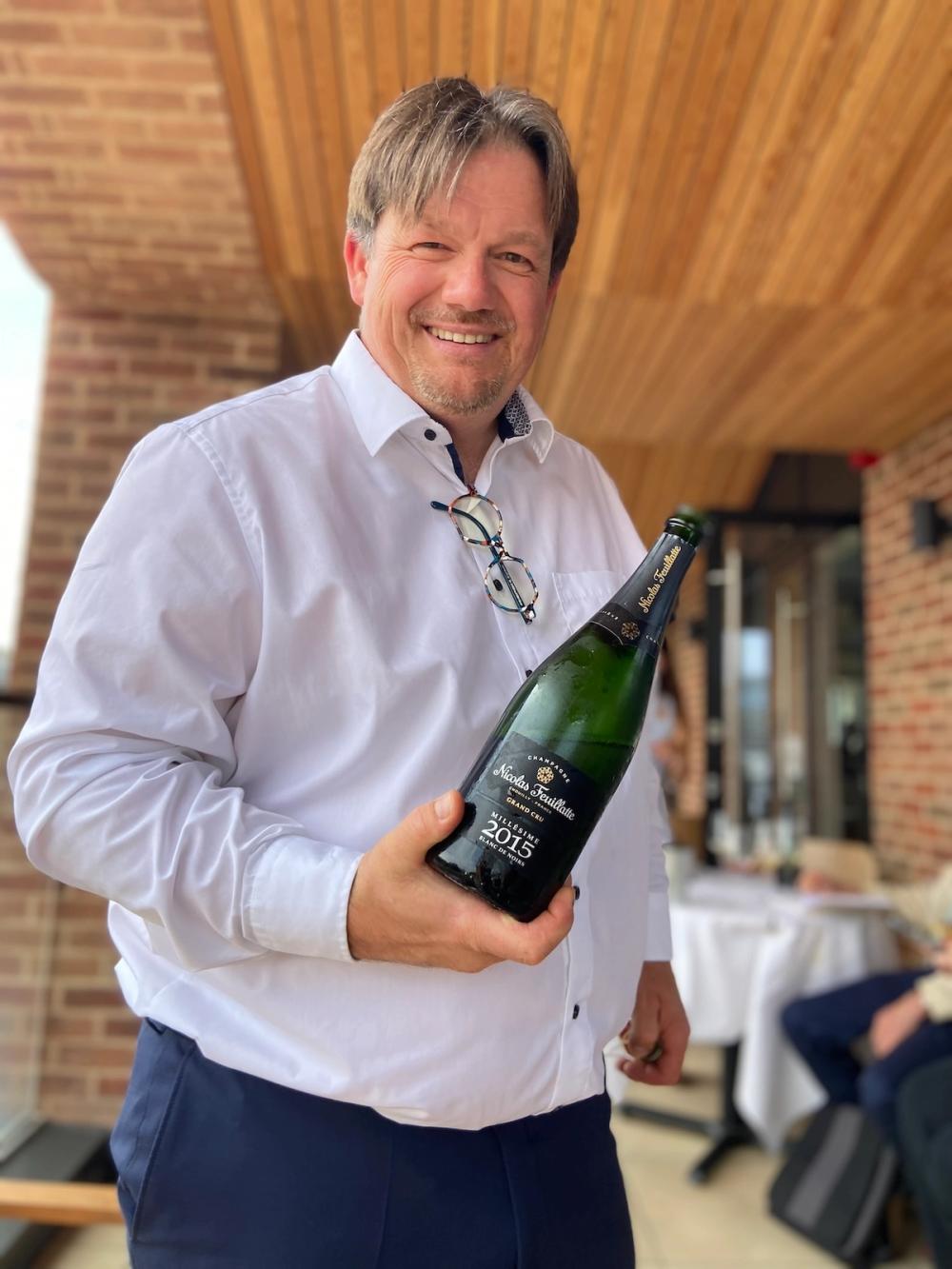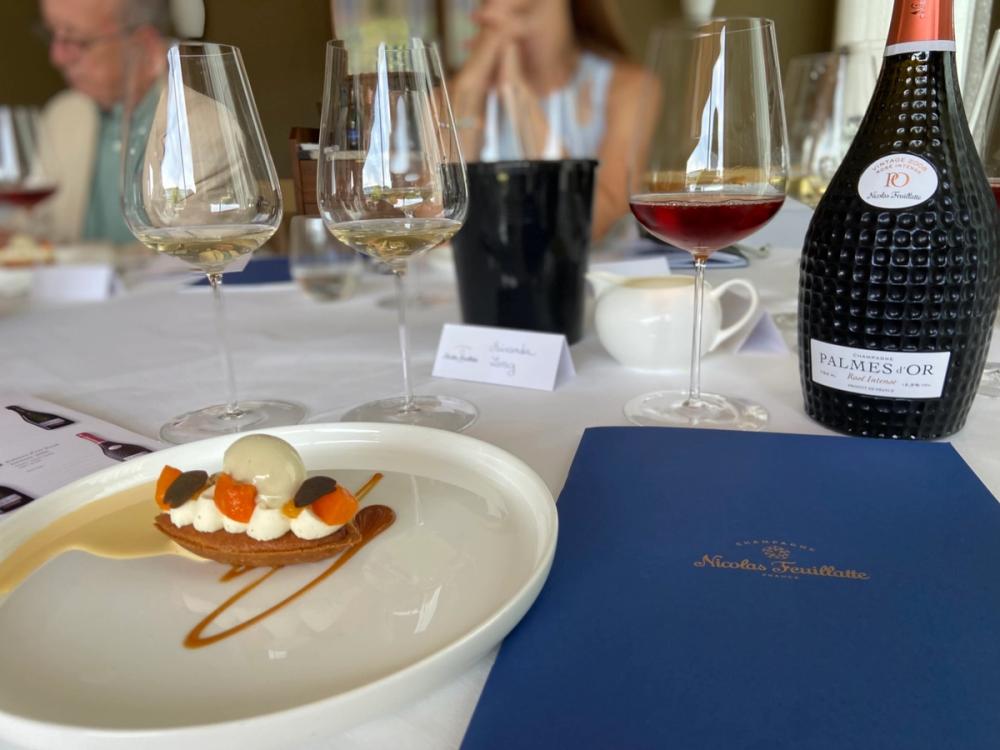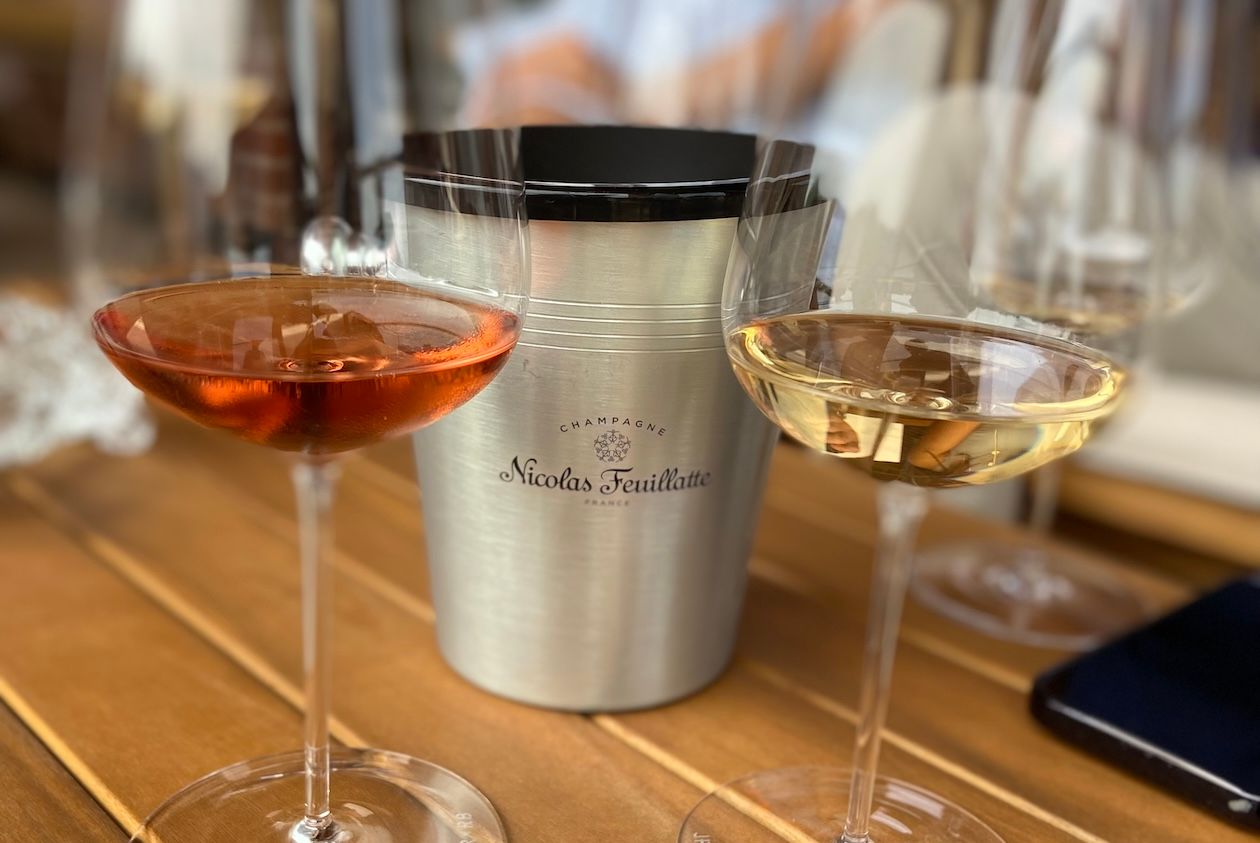Created from humble beginnings less than 50 years ago, Nicolas Feuillatte has achieved great things in its short history. It has reached heady heights of worldwide success by being ranked third after Moët et Chandon and Veuve Clicquot as the most popular Champagne brand. In France it comes top.
It’s perhaps not surprisingly then that it has spotted the opportunity to win over the UK on-trade too.
So what makes Nicolas Feuillatte so popular?’
Affordable luxury’ is the marketeer’s phrase and it’s true Nicolas Feuillatte (pronounced “feu/ee/at”) has a unique position in the hallowed Champagne region.
“I believe we are really the true expression of Champagne, we vinify grapes from almost all of the Champagne region from 5000 growers (one in three in the region). No other producer can make this claim… we are a proud collective union,” exclaims cellar master Guillaume Roffiaen.
Indeed Nicolas Feuillatte is unique in Champagne; it is not just a single cooperative, but a super-cooperative or, rather, a union of cooperatives. And today it produces over 10 million bottles a year.
Building on its off-trade success Nicolas Feuillatte’s on-trade launch strategy is to capitalise on brand recognition gained in-store, Roffiaen explains. But unlike other champagne brands, it is offering two distinct ranges for the on- and off-trade. “Our selection for the on-trade is more exclusive.”
On-trade collection
There are eight champagnes available to the on-trade (with recommended restaurant wine list prices).
Réserve Exclusive Brut and Rosé (£75-£105)
Réserve Exclusive Premier Cru Extra Brut (£90-£100)
Blanc de Blancs Vintage 2018 (£90-£105)
Grand Cru Blanc de Blancs and Blanc de Noirs vintage 2015 (£115-£125)
Palmes d’Or Brut 2006 (£330-350)
Palmes d’Or Rosé 2006 (£330-350)
The two familiar off-trade wines are: Grande Réserve Brut and Grande Réserve Rosé.
The tasting is designed to illustrate how Nicolas Feuillatte can be enjoyed as both an aperitif and paired with fine-dining and gastronomic menus. In the UK, the producer has entered a new partnership with Hallgarten & Novum and is eyeing up quality dining multiples (think of the Christmas Carol – The Holly and the …), fine-dining restaurants and upmarket wine bars and bistros.

We start tasting the range with an aperitif of the Réserve Exclusive Brut and Rosé NV Brut on the roof terrace of the elegant Cornus, a hidden gem of a place.The Grand Cru Blanc de Blancs 2015 and Grand Cru Blanc de Noirs 2015 follow on.“Our DNA is fresh and fruity,” Roffiaen explains and the aperitifs beautifully demonstrate this.
Roffiaen calls the Réserve Exclusive Brut (40% Pinot Noir, 40% Meunier, 20% Chardonnay) a “simplex blend”. “Simple to understand, easy to drink, but by far the most complex to produce – from 200 different crus across the whole region of Champagne.” There are five different crus of each grape variety in the reserve which are each kept three to four years on the lees to finish the blend.
The Réserve Exclusive Rosé (10% Chardonnay, 45% Pinot Noir, 45% Meunier) is made of 85% white wine and 15% red wine. The red portion goes through three different macerations, including a carbonic maceration to ensure a balance between aroma and structure.“The macerations are very important as we don’t want the blend to express the structure of the red wine, rather the structure of the white,” says Roffiaen.
Art of blending

Guillaume Roffiaen: “We prepare the future”
With our starter of ravioli of ricotta, wild garlic and white asparagus, Roffiaen outlines his art of blending.
“The way we process the wine is a bit different to other wine houses. We prepare the future: we select grapes from the harvest for the reserve and may only put a small proportion in the current wine. Thanks to this method we have a toolbox for the future.” Each year the percentage of grapes from the current harvest compared to the reserve wines varies.
The Réserve Exclusive 1er Cru Extra Brut NV (33% Chardonnay, 33% Meunier, 33% Pinot Noir) has three years’ cellar ageing. One of the hallmarks of Roffiaen’s wines is his precise approach to liqueurs de dosage. “I believe it is more important to have a balanced wine at first – unlike some champagne houses, I don’t believe in a zero dosage champagne. “
The Grand Cru Blanc de Blancs 2015 (100% Chardonnay) has six years’ cellar ageing and is sourced from prestigious vineyards in the Côte des Blancs and Southern Montagne de Reims. It is a delicate, velvety champagne with gossamer-fine bubbles, citrus and floral notes and a light and airy finish with a chalky mineral backdrop. The Grand Cru Blanc de Noirs 2015 (100% Pinot Noir) also has six years’ cellar ageing and is a gourmet champagne which works very well with fish, white meat and scallops. It has delicate bubbles, a peppery nose and a delicate bitter edge on the finish imparting freshness and overall depth.
Vintage Champagne

Vintage wines are not made every year.We savour the Blanc de Blancs Vintage 2018 with the main course of Scottish cod with Cornish mussels. It is fresh and delicate and the pairing with fish works brilliantly with beautiful spicy notes and open fruit. (The 2019 vintage has been disgorged just six weeks earlier and has not been released yet).
With dessert, we are treated to the Palmes d’Or Rosé Intense 2006. This is a saignée rosé champagne with a beautiful depth of colour. Two Grand Cru vineyards are married together in equal measure: Bouzy for structure and spice, and Les Riceys for aromatic intensity and dominant strawberry notes. The elegant bottle design is based on black pearls. Palmes d’Or is a reference not to the Cannes awards, but to the top academic distinction and Julius Caesar-style crown of golden leaves.
The founder, Nicolas Feuillatte, sold the brand in 1986 to the Centre-Vinicole de la Champagne in 1986. It is now part of Terroirs et Vignerons de Champagne (TEVC), the big cooperative which also owns the distinguished Castlenau and Henriot champagne houses. We marvel at the modern champagne’s speed of growth. As well its HQ in Chouilly in the heart of the vineyards in Champagne, it also now proudly boasts a luxury store in Paris. In other words, Nicolas Feuillatte has arrived.
Nicolas Feuillatte Champagnes are available in the UK through Hallgarten & Novum which is a commercial partner of The Buyer. To discover more about them click here.
